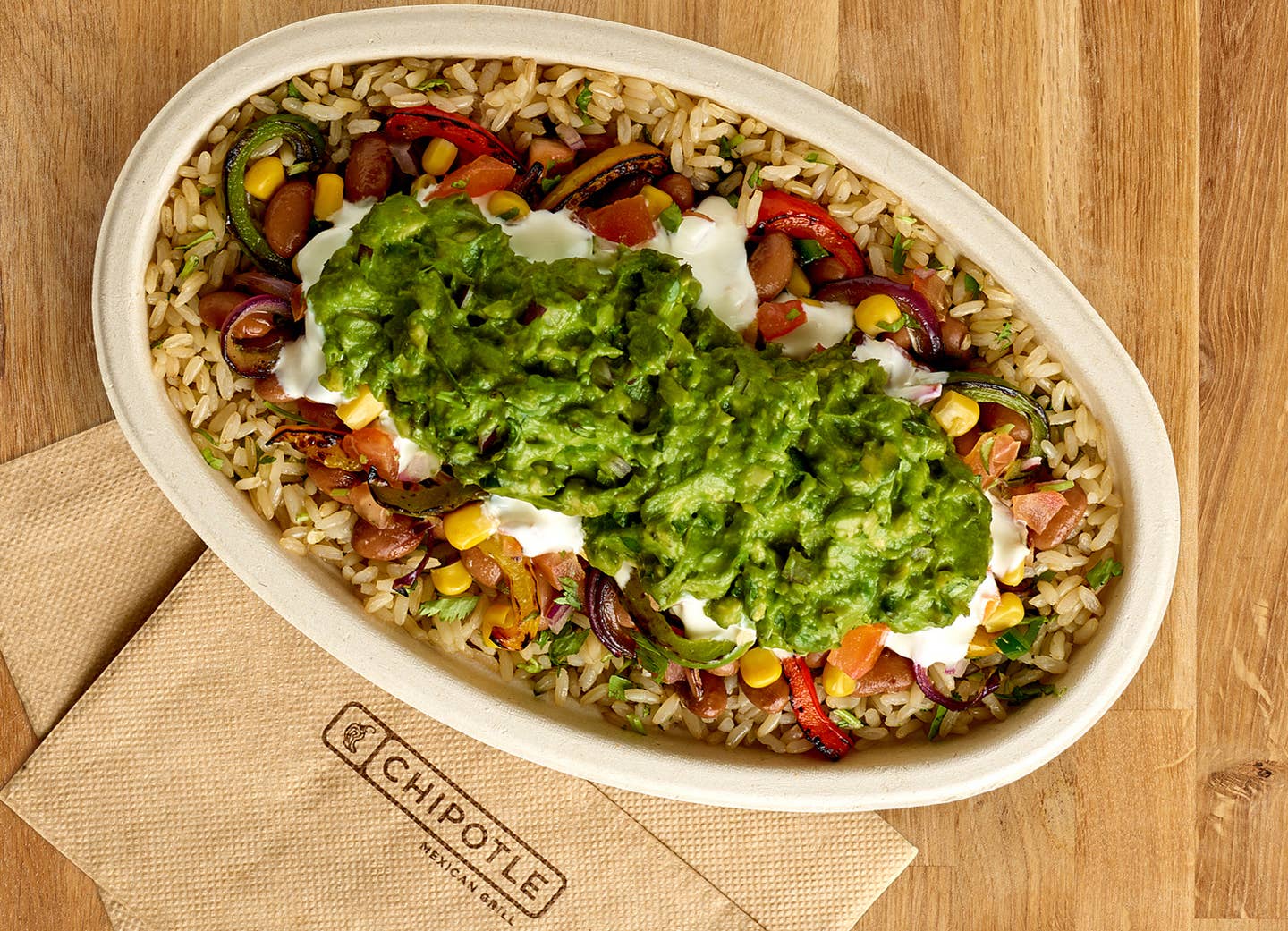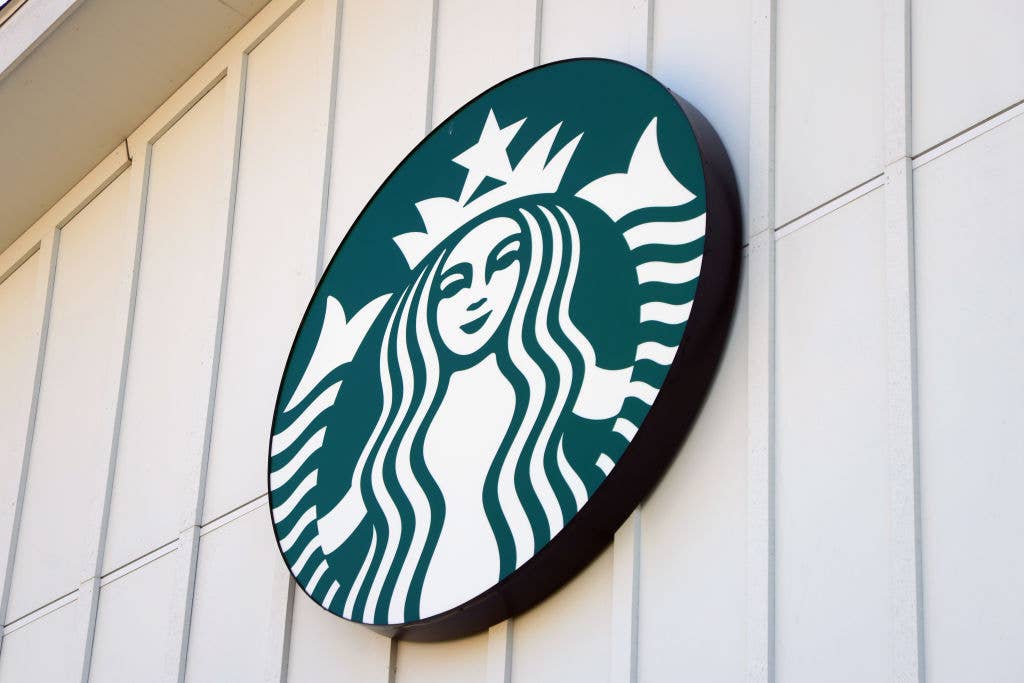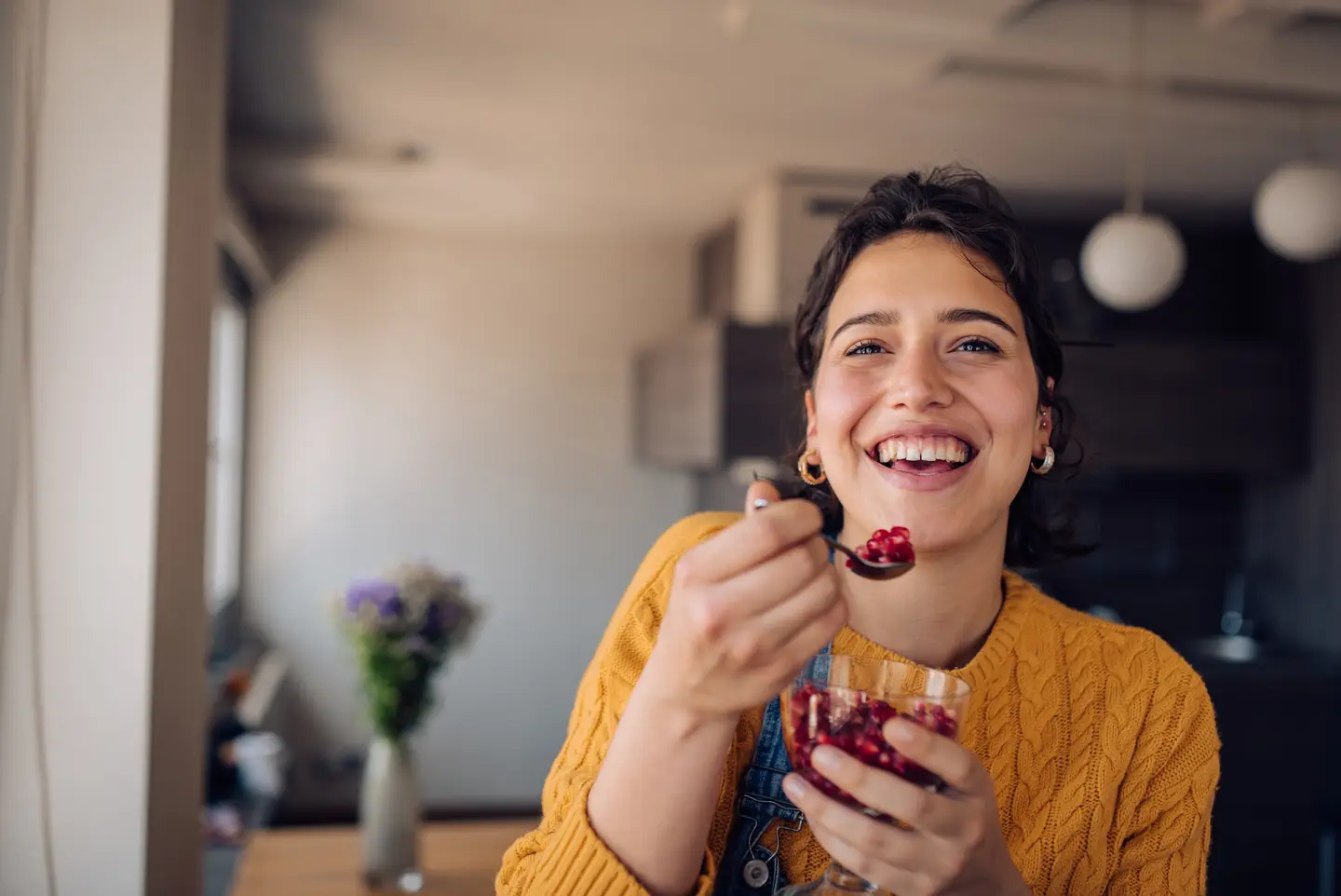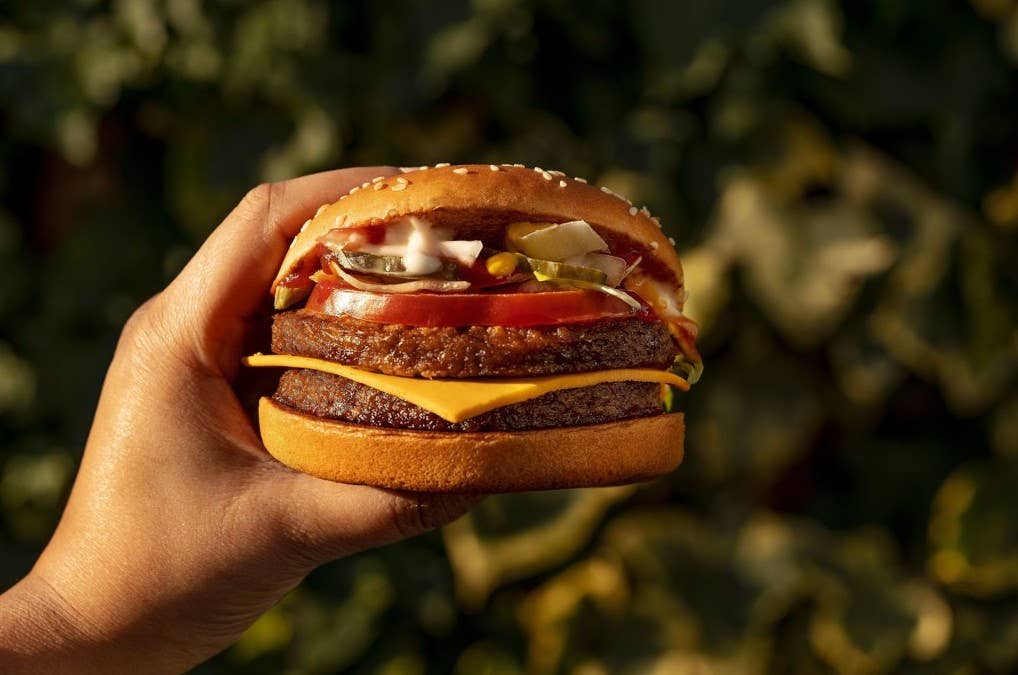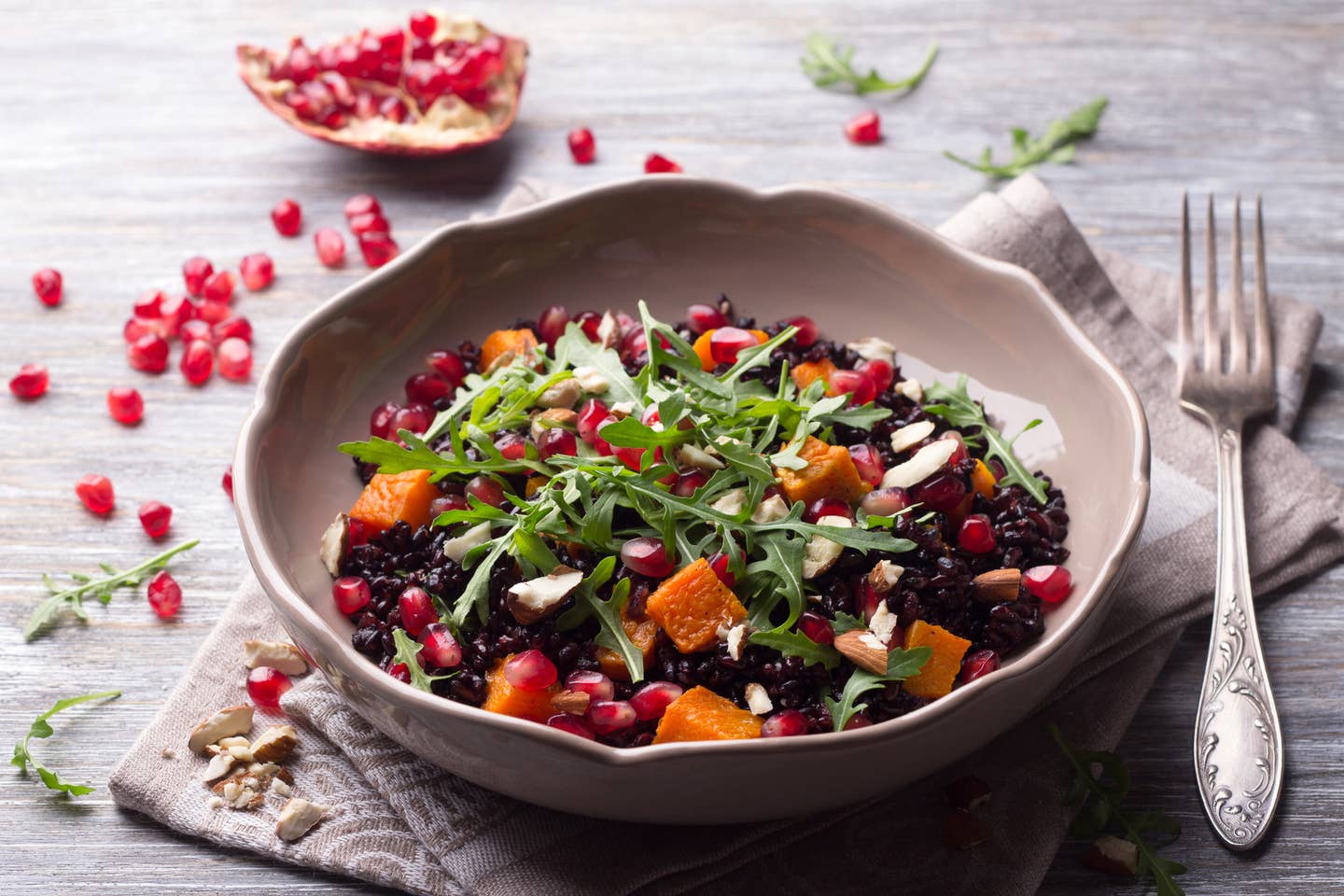
7 Tips to Get Your Healthy Diet Back on Track, From a Nutritionist
This is the season of overeating. After a Thanksgiving where there were fewer people at the table and more leftovers to pick at for the past three days, we all need a break from cold stuffing and forkfuls of pie, eaten right out of the tin. Enter Nicole Osinga, RD and creator of the VegStart Diet, the healthy and natural way to lose weight without doing anything other than piling your plate full of whole, plant-based foods that are high in fiber and nutrients, low in calories and sugar. Eat up, lose weight, and feel energized on her easy 14-day meal plan.
Here are Nicole Osinga's top tips for getting, and staying, on track from now till it's time to enjoy the next holiday, which is coming faster than you may think!
Tip 1: Don't starve yourself after a day of eating. You will go off the rails.
You may think it's a good idea to deprive yourself of food in the morning after a day of overdoing it. Or you choose to skip breakfast and lunch before a dinner where you know it will be a special meal (of all your favorite foods) Actually, the opposite is true, says Nicole. Starving yourself just sets you up for overeating at your next opportunity, and that defeats the point. "The first thing you will do is reach for all the wrong foods, like bread and carbs," Nicole says. Her advice: Eat a modest and healthy breakfast like overnight oats and berries, or a small but fiber-filled lunch like a big salad full of greens and legumes. That way when you walk into the room full of food your body will be nicely fueled and you will be able to make a rational decision of what (and how much) to eat.
Tip 2: Snack healthy: Combine heavy foods like nuts with light food like celery.
The most important thing about snacking is to not overdo it. A snack should give you just enough calories and fuel to tide you over till the next meal. It does not need to feel like a meal in itself. That means about 200 to 250 calories, but not 400 calories, which is easy to get to if you are eating nuts or other calorie-dense, heavy foods. Instead, combine protein and carbs in the form of heavy and light foods. So that means dip celery stalks, which are light, into almond butter, which is heavy (not your finger or a spoon out of the jar). Plus the fiber in the celery will make you feel fuller longer and help your body slow-burn the fuel, leaving you sated until dinner, and not overly-hungry when it is time to sit down to eat. For other great snack ideas to keep blood sugar low, see the VegStart Diet. (Popcorn lovers you will be happy.)
Tip 3. Hydrate. And take 10 minutes to see if you are actually thirsty, not hungry.
This is a no-brainer and yet so many of us don't do it. Drink plenty of water throughout the day. Keep a water bottle handy or a tall glass of water (you can infuse it with lemon if that makes it more palatable). Too often we mistake thirst with hunger, Nicole says. That means you recognize an urge but you go to the fridge instead of the sink. Try this instead: Drink a full tall glass of 8 to 12 ounces of water and wait ten minutes. Chances are the urge goes away. If you are indeed hungry, choose foods that are hydrating, like a piece of fruit that has both high water content and high fiber content. An apple or an orange is nature's snack packs.
Tip 4. Slow down. It takes 30 minutes to feel full. We eat 30% more food than we need.
This advice is as old as we are. How many of us were told as kids to "slow down" and still we inhale our food. Practice this: Put your fork down as you chew. Let it sit on the side of the plate for a few seconds and then pick it up to take the next bite. You want to eat mindfully and so many of us are distracted, or busy, and eat like it's a race. Your body requires 20 to 30 minutes to send satiety cues from your stomach to your head, which is why we usually eat 30 percent more calories than we need at every meal, and those calories get stored as fat, sorry to tell you. Instead, eat slower, and chances are you will feel full and satisfied, without joining the clean plate club. If you find that doing this allows you to eat 2/3 of your plate, great! Save the leftovers for later since that 1/3 of your meal makes a perfect snack!
Tip 5. Eat your salad first. Then enjoy the less healthy sides or mains or desserts.
This is called front loading. What it means is if you front-load the system with beneficial vegetables, high fiber foods that fill up your stomach, and protein-rich foods like beans or legumes, you will be much less likely to over-do it on the calorie-dense foods like mashed potatoes or dessert. The salad you eat isn't just filling you up, it's sending a signal to your body that quality food is coming, and your energy level will be higher, your immune system will be working on high, and your cellular messaging to the brain will make you feel sharper. Food should not make you want to take a nap. Salads and vegetables filling up most of your plate ensure that the other smaller portions of carbs or fatty foods don't overwhelm the nutritious foods. Eat a mostly plant-based diet full of whole foods such as vegetables, whole grains, nuts, seeds, and legumes and you will feel better, less fatigued, right after you eat.
Tip 6. Know portion size. A snack is enough fuel for 2 hours. A meal fuels you longer.
Portion size is one of the biggest problems for most people trying to lose weight. You can enjoy small portions of your favorite foods, but the trouble is that most of us can't calibrate hat that means, or we don't know how to stop at just a few bites. For a snack, think of a handful of nuts or seeds, which is enough fuel to get you through the next 2 to 3 hours. A meal will be enough food to sustain you for the next 4 to 5 hours. Make snack packs ready in the fridge if you have trouble doling out the right amount of food for yourself at the time when you want it.
When you think about your body, you want it to be a race car, so fuel it with the highest-quality food you can find, which are whole plant-based foods like vegetables and fruits, seeds and nuts, grains and legumes. Then only as much as your next "trip" requires. going for a hike takes more out of you than sitting at your desk. Each portion should come with a "task" attached. This food will take me through 4 hours of walking or hiking. Otherwise, you become the fridge. You want to be the car.
Tip 7. Have fun. Treat yourself. If you have dessert tell yourself, you’re human. No guilt.
This is key: When it comes time to celebrate, as you did over the holiday and as you will over the next upcoming event, that's fine. Consistency is key and when you are healthy most of the time, you can afford to have a treat, a dessert or a calorie bomb on those occasions. Don't think of it as: I blew it, so now I'm just throwing caution to the wind. Quite the opposite, you are human and these special occasions call for celebration and enjoyment. Let yourself indulge and then get back on track the next day. Your body is resilient, and it will pop back into shape when you treat it right, with healthy nutritious food. Live life and choose to be healthy most of the time. You will be surprised at how that rewards you now and for years to come.
More From The Beet

